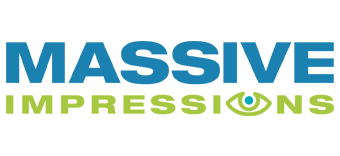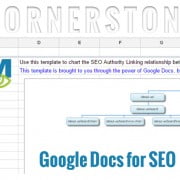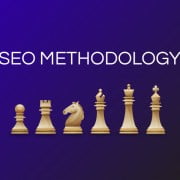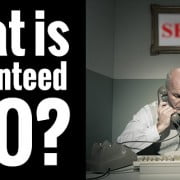Three Content Marketing Pillars of SEO: Relevance, Frequency and Authority
There are three content marketing pillars of SEO: relevance, frequency and authority. These are the classic pillars of SEO, what’s been referred to since SEO became an online marketing practice to drive qualified visitors to websites through search engines. They were the first established pillars, principles that content marketing centered around, even before social media. Understanding the importance of each principle, and keeping them in practice in your content marketing investment is important. Following these principles, the three content marketing pillars of SEO, will cause your site to rank against competition.
The three content marketing pillars of SEO encapsulate the challenge of getting sites to rank.
The three are the basic requirements for getting sites in front of their competition on search engine results pages. If you’re following these three principles, when you publish content on webpages, you’ll be able to get your pages in the first positions, but it’s still a competition, and where the competition is strong the effort required to get in front of them in proportional. However, the direction the effort has to take is guided by these three pillars, and if your efforts in each of these three areas are excellent and strong, you’ll have a chance.

The first two pillars are things you can directly influence easily: relevance and frequency. You have the ability to publish relevant content to your website often. The third pillar is something you have the ability to influence directly less often, but has probably the biggest impact on how you do against competition: authority. The more other websites link to yours, the higher your site’s authority goes. That’s the entirety of the three content marketing pillars of SEO in a nutshell. There’s lots of dimensions of detail for each of those challenges, and the excellence of your approach to each contributes to the sum of the results, but just like legs on a tripod your efforts won’t work unless all three stand.
 Relevance is the first pillar.
Relevance is the first pillar.
It refers to the need to publish relevant content on the site that’s trying to attract visitors. While that might sound easy in concept, the devil is in the details, and once you roll up your sleeves to do it, it may be more challenging than you’d expect. If your content isn’t relevant it doesn’t have a chance of being indexed at all.
Google is powerful, sometimes magically seeming at times, but it can’t really read minds – yet. This means if you want people who are searching for “aardvarks” to come to your site, you have to talk about aardvarks. For a business who wants to project a rhino image, and doesn’t want to admit their primary business line is based on aardvarks, this might be more difficult than for a business who has no qualms being highly transparent about what they do and what they want to do.
But there’s another dimension to relevance besides being open and letting the content flow. You’ve got to speak in the language of your audience. If your audience wants to call your service or product one thing, but you prefer to use another, more professional term, then your preference might get in the way of attracting visitors. The key terms chosen to leverage in content marketing efforts have to be the key terms the qualified audience you’re after are using in their searches. If they’re not, and you’re site speaks above their heads, it won’t have as much of a chance of attracting visitors compared to if it were relevant, and used the audience’s key terms, the ones they’re using in searches.
The second pillar is frequency.
The more frequently you publish, all through the year, the more the search engines will favor your content. This is because search engines recognize that fresh information is typically more accurate, more complete information. A site that publishes new content every day is ranked higher than an equivalent site that publishes the same amount of content each week. Likewise, a site that publishes new content every week is ranked higher than an equivalent site that publishes the same amount of content each month. This is because sitemaps can indicate to Google how often the search crawlers should return. And if the crawlers find that the sitemaps weren’t lying, that the content does indeed get updated daily, weekly, or monthly, then the crawlers trust the site, consider it more credible, and reward the site with higher ranks and wider exposure.
 Both relevance and frequency are things website publishers can directly control. The third pillar isn’t so directly controllable. It’s super-important though, and without it the investment made in the first two pillars won’t be completely realized. Some attempts to define the three pillars of SEO use social as the third pillar and omit frequency. Understanding the entire scope of this third pillar makes it easy to understand how social efforts fall underneath it, but in a unique and valuable way.
Both relevance and frequency are things website publishers can directly control. The third pillar isn’t so directly controllable. It’s super-important though, and without it the investment made in the first two pillars won’t be completely realized. Some attempts to define the three pillars of SEO use social as the third pillar and omit frequency. Understanding the entire scope of this third pillar makes it easy to understand how social efforts fall underneath it, but in a unique and valuable way.
Authority is the third pillar of content marketing SEO.
It refers to the sum of the influence all other sites across the internet have by linking to the site being optimized. If a lot of big sites are linking to yours, it has high authority. If few sites, and just small sites, are linking to yours, it has less authority. Links on other sites are referred to as inbound links. An effort online marketers practicing SEO perform is referred to as an inbound linking campaign. Some places are easy to get links from. These typically have low, but cumulative effects. Other places are more exclusive. Knowing what options exist for building authority keeps expectations for SEO realistic. This helps stakeholders stay on the same page and in the same direction, following a content marketing strategy that will win ranking battles rather than just waste resources where SERP victory less likely.
The challenge with building authority is getting inbound links from high authority sites. Not every publisher has an opportunity for you to get a link on their site – and buying ads technically isn’t supposed to yield any SEO benefit. Most ads are marked up in a way that make search crawlers ignore their inbound links. The most juicy inbound links are the ones most difficult to get , and getting the best links takes more than just money – the best links exercise synergies unique to each site.
There are sites that will sell you links, for example listing your business in a directory, but Google is pretty wise as to what’s a paid link and what isn’t, even if the link isn’t marked up as an ad. Some sites can actually hurt your site if Google doesn’t like them. Google doesn’t like spammy sites, sites with paid links, sites that duplicate content or sites that try to game its algorithms. Having links from those sites will lower your site’s authority. What matters is the cumulative effect of all inbound links.
Social media sites are high authority sites.
Unlike most sites whose content is exclusively controlled by publishers, social media sites allow social media users to have direct control over a portion of the content on that site. Social media sites allow users to publish posts that include links back to sites, inbound links. While these sites also contain lots of links to bad sites, and sites that are irrelevant, Google looks kindly upon the major social media brands. Whereas having lots of links from these sites used to have negligible impact, now having a strong social media presence in multiple social media sites benefit’s a brand’s SEO. The only issue is that there are so many links, to so many sites from social media sites, that any one link out of a social media site has a very small impact. So one person sharing a link has little impact. However, once many people re-share a link, and the same link appears dozens and dozens of times on social media, Google takes notice once more.

By exemplifying these three pillars in your content marketing strategies, you SEO investments will deliver the most return. Having a set direction is critical if efforts can’t be wasted, when every dime invested in online marketing has to count. The more you understand about what makes SEO methodology effective, the more the results of your content marketing will be.
To talk to online marketing experts who understand SEO and how to leverage it for your business goals, call us: (866) 800-3579 or use the other ways to contact us we have listed on this site.

 Relevance is the first pillar.
Relevance is the first pillar.








